Potřebujeme váš souhlas k využití jednotlivých dat, aby se vám mimo jiné mohly ukazovat informace týkající se vašich zájmů. Souhlas udělíte kliknutím na tlačítko „OK“.
ASTM D2982-07(2013)
Standard Test Methods for Detecting Glycol-Base Antifreeze in Used Lubricating Oils
Automaticky přeložený název:
Standardní zkušební metody pro detekci glykolu základní nemrznoucí použité mazací oleje
NORMA vydána dne 1.5.2013
Informace o normě:
Označení normy: ASTM D2982-07(2013)
Poznámka: NEPLATNÁ
Datum vydání normy: 1.5.2013
Kód zboží: NS-22156
Počet stran: 5
Přibližná hmotnost: 15 g (0.03 liber)
Země: Americká technická norma
Kategorie: Technické normy ASTM
Anotace textu normy ASTM D2982-07(2013) :
Keywords:
glycol-base antifreeze, glycol-base coolant, used lubricating oil, ICS Number Code 71.100.45 (Refrigerants and antifreezes), 75.100 (Lubricants, industrial oils and related products)
Doplňující informace
| Significance and Use | ||||||||||
|
5.1 Leakage of glycol-base antifreeze into the crankcase is serious because the coolant tends to interfere with the lubricant and its ability to lubricate; it also promotes sludging. Ethylene glycol present in the coolant can increase varnish deposit formation in the crankcase as a result of glycol oxidation and the interaction between glycol and lubricant. Furthermore, because glycol is a higher boiling material than water, it will tend to stay longer in the crankcase oil than water. Lubricant displacement, sludging, and deposit formation all lead to engine malfunction and possible seizure. 5.2 These tests are designed to detect glycol-base coolant contamination even at low levels because early detection enables corrective measures to be taken to prevent leaking coolant from accumulating and seriously damaging the engine. 5.3 These test methods are also significant because the reagents can be packaged as a field kit, and the procedure can be followed at the site where there is a concern. |
||||||||||
| 1. Scope | ||||||||||
|
1.1 These test methods cover the qualitative determination of glycol-base antifreeze in used lubricating oils (mineral base) by two procedures, one using reagents in tablet form and the other using laboratory shelf reagents. Principally the test methods detect ethylene glycol but will also detect other 1,2-glycols that may be present. 1.1.1 When a positive result is obtained and a sample of the unused oil is available, the unused oil is also tested and used as a reference. 1.2 The tablet procedure (Procedure
A) is sensitive to about 100 mg/kg and the shelf reagent procedure
(Procedure B) to about 300 mg/kg of ethylene glycol.
1.3 Glycol-based coolant leaks into crankcases may not be detected or may result in a low bias using these test methods if the glycol has degraded or been thermally or otherwise oxidized. The conditions in crankcases may be such that contaminant glycols are oxidized or degraded to a degree to which the color indicator reaction does not occur or is biased enough so as to not trigger the color change. Other test methods for the detection of coolants or coolant additives in lubricating oils should be used if the results from these test methods alone are inconclusive or questionable. 1.4 Carbohydrates such as sugars and sugar-containing substances are sometimes used for sabotage purposes. If the presence of these substances is suspected, Procedure A contains a modification to remove these interferences. 1.5 Both procedures are adaptable to field kit use, and brief descriptions for converting to field kit form are given in 1.5.1 Commercial field testing kits are available.1.6 The results obtained by this method are qualitative expressions. However, for the preparation of reagents and in the procedures, acceptable SI units are to be regarded as the standard. 1.7 This standard does not purport to address all of the safety concerns, if any, associated with its use. It is the responsibility of the user of this standard to establish appropriate safety and health practices and determine the applicability of regulatory limitations prior to use. |
||||||||||
| 2. Referenced Documents | ||||||||||
|
Podobné normy:
Historická
1.4.2010
Historická
1.4.2011
Historická
1.5.2012
Historická
1.10.2011
Historická
1.6.2012
Historická
1.4.2012
Doporučujeme:
Aktualizace technických norem
Chcete mít jistotu, že používáte pouze platné technické normy?
Nabízíme Vám řešení, které Vám zajistí měsíční přehled o aktuálnosti norem, které používáte.
Chcete vědět více informací? Podívejte se na tuto stránku.


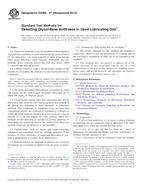
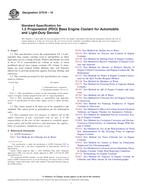 ASTM D7518-10
ASTM D7518-10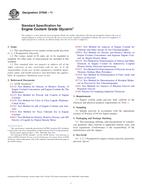 ASTM D7640-11
ASTM D7640-11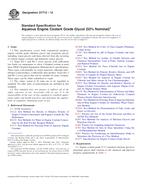 ASTM D7713-12
ASTM D7713-12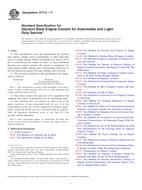 ASTM D7714-11
ASTM D7714-11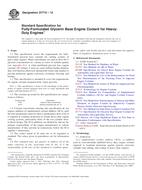 ASTM D7715-12
ASTM D7715-12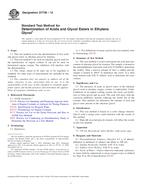 ASTM D7736-12
ASTM D7736-12
 Cookies
Cookies
